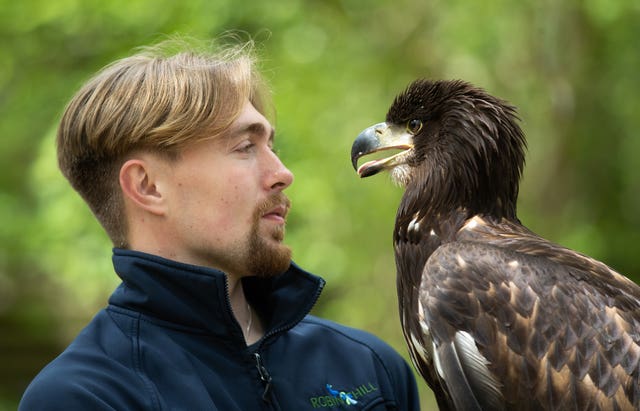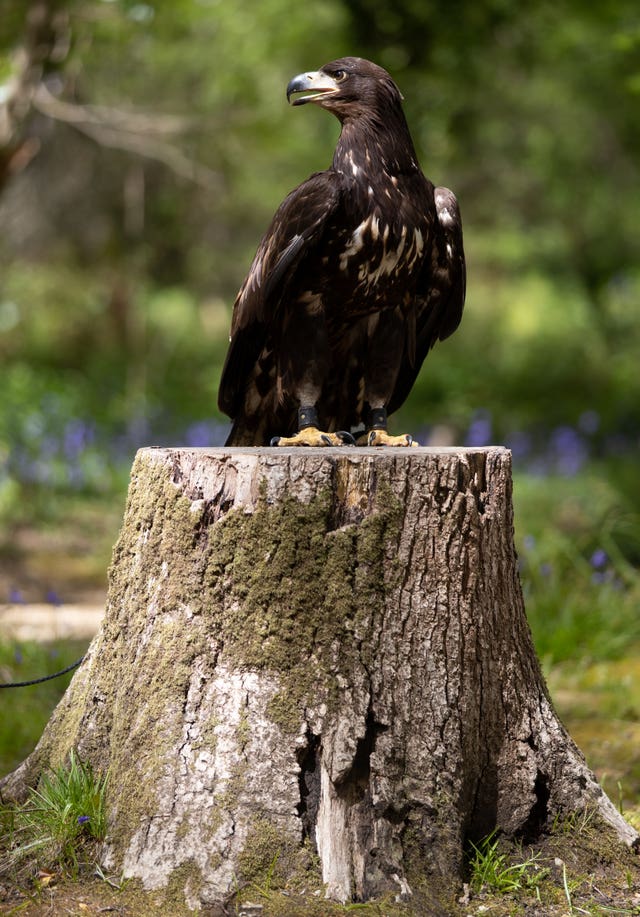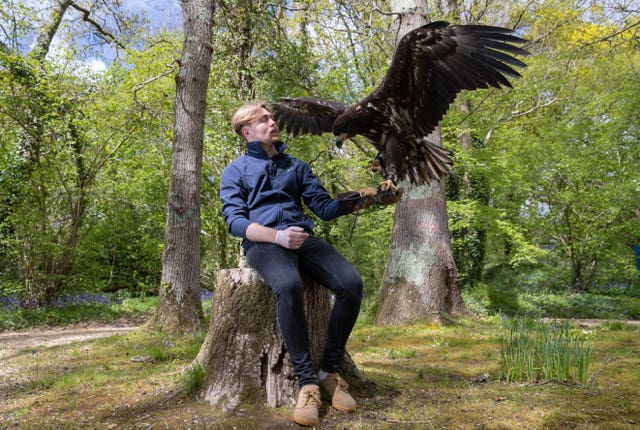‘Awe-inspiring’ white-tailed sea eagle arrives on Isle of Wight
The young bird of prey has been named Chief to match its ‘majestic’ nature.

A 10-month-old white-tailed sea eagle called Chief is the latest of the extremely rare birds of prey to arrive on the Isle of Wight after the species became extinct in the UK nearly 200 years ago.
The youngster, who weights 9.5lb and has a 7.5ft wingspan, has been brought from the Scottish Eagle Centre to live at Robin Hill nature and visitor park.
He said: “It has been my childhood dream to train a white-tailed sea eagle.
“It’s been a slow and steady journey to build a bond of trust with Chief, with his welfare of the utmost importance.

“There is nothing more awe-inspiring than to see a bird of prey in action.”
The species – Britain’s largest bird of prey with an 8ft wingspan – is native to the UK and once was commonplace across the south coast of England from Cornwall to Kent but was driven to extinction by persecution that began in the Middle Ages.

The species was successfully reintroduced to Scotland, where there are now more than 130 pairs, and a reintroduction programme is taking place on the Isle of Wight which started in 2019 with 60 birds set to be released over a five-year period.
Adults are predominantly brown, with a pale head and white tail, and in flight the eagle has long, broad wings with a short wedge tail. They have a life expectancy of 40 to 50 years.
James Crofts, park manager at Robin Hill, said: “We are so excited to be reopening with a brand-new arrival that enhances our ability to educate and enthral visitors on rare and wild birds.
“Chief signifies our ongoing development of quality falconry experiences on-site, and we hope that by getting up close and personal people will have more appreciation for the species overall.”

A spokesman for Robin Hill, which is set to reopen to the public on May 19, said that Chief was given the name to match his “majestic” nature and “sense of seniority and superiority”.
He added that Chief did not yet have the famous white tail as this develops as sea eagles get older.





